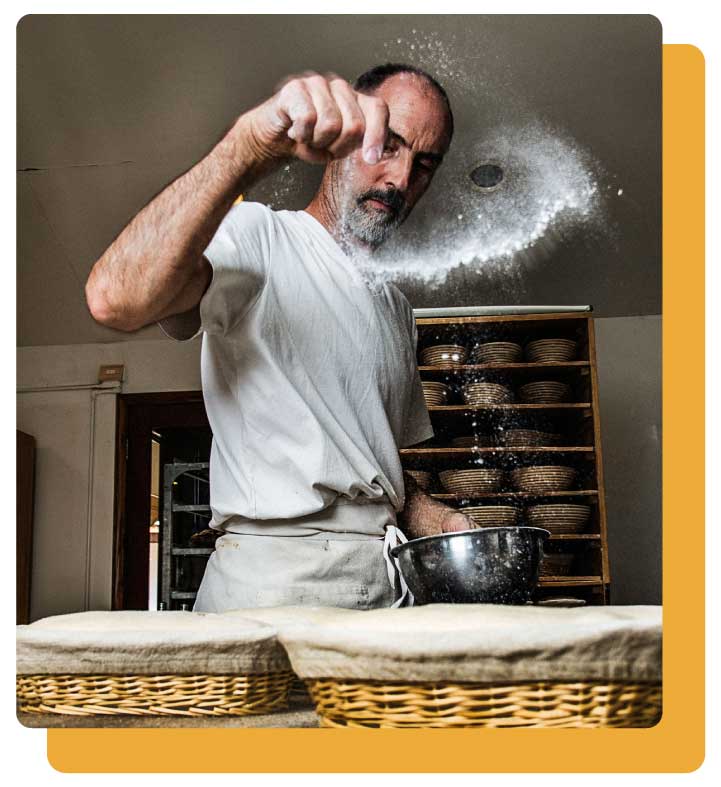Chad Robertson
Extreme Composition for Nutrition, Texture, and Flavor that Make You Happy to Eat
The porridge method and, to some extent, the sprouted grain method also make it possible to add a large percentage of grains with very low or no gluten, such as corn, barley, oats, coarse rye (pumpernickel), sorghum, millet, quinoa, etc : so the flavor of the specific grain is evident, while still achieving a loaf with a moist, pearlescent open crumb and substantial crust. The Tartine style structure is preserved, even while incorporating upward of 50 percent or more grains that are not typically suited to making hearth breads. For Chad, this represents a sort of third wave for the whole-grain breads, adding a new range and depth of flavors while maintaining ideal structure and volume.
Cooking whole or coarsely ground or cracked grains renders them more easily digestible; the porridge is incorporated into the dough toward the end of the mixing process, after the dough has been properly developed. Rather than replacing a percentage of the flour with these grains, they are added as you would nuts, dried fruit, or seeds, as a flavoring agent rather than a part of the overall flour blend.
When they emerge from the oven, the super hydrated porridge breads are barely set, so much so that I generally let the bread carefully cool overnight before cutting into it. The trade-off for patience is shelf life: A loaf of porridge bread will easily keep a week before it stales. These breads bring world of new flavors and textures to whole grain baking.
Formula: Oat Porridge
Duration: 3 hours









